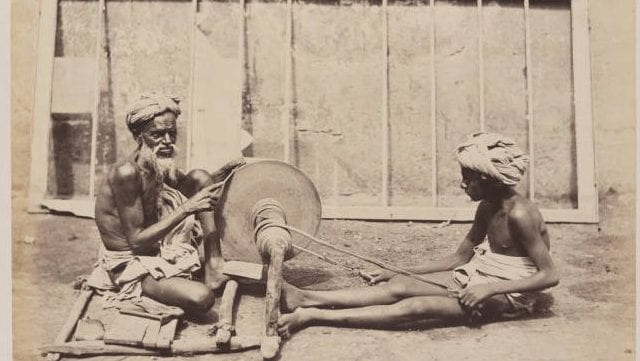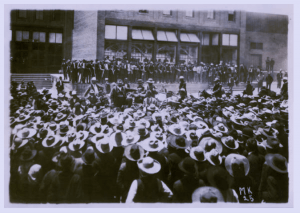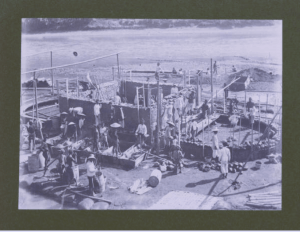Colonel William C. Green with Arm Outstretched Addressing Crowd of Mexican Workers during Miners Strike, 1906, Cananea, Mexico
This photo features Colonel Wiiliam C. Greene, an American businessman who discovered copper reserves in Cananea, Mexico, addressing a large crowd of Mexicans. Greene would go on to create the Greene Consolidated Copper Company, and would in turn become one of the wealthiest businessmen in the world. As the title of the photo suggests, the Mexicans are miners that work under Greene, who are standing in the crowd he is addressing. Behind Greene, stands a crowd of white men, all holding guns. This conflict entails many of the common themes discussed throughout the semester. Namely, the oppression of native peoples by the European (and in this case, American) colonizers, who are stripping the colonized land of its natural resources in order to increase the wealth of the home-country, and the expense and oppression of the indigenous people. This photograph raises two questions, one asking whether or not this conflict turned violent, and was a spark for the revolution. The other question is whether or not the miners were being paid at all, or instead being held in prison camps, which would allow one to deduce of Greene came to be so wealthy.
http://digitalcollections.smu.edu/cdm/singleitem/collection/mex/id/173/rec/5
Cirebon – Kroya Railway Line Bridge over the Kali Serayu River under Construction
This photo, taken in Central Java, India, shows the construction of a railway line between the cities of Cirebon and Kroya. The function of this rail line was to ship the natural resources of British-colonized India, back to the home country. This enabled the British to take advantage of a much more efficient shipping method, thus allowing for increased profits from the stripping of India’s natural resources. Pictured in the photo are dozens of workers, all of which appear to be native-born Indians. This allows one to deduce that the British were taking advantage of cheap-or even slave-labor on the part of the Indians. Additionally, even several child laborers are pictured. A question that this photo brings up however, alludes to the lack of any white European supervisors, who one would deduce would need to be there in order to make sure the work was being done efficiently. Another question additionally, is why several of these indigenous peoples are pictures as fairly well dressed, while others are barely clothed, wearing rags.
http://digitalcollections.smu.edu/cdm/singleitem/collection/eaa/id/1751/rec/36



